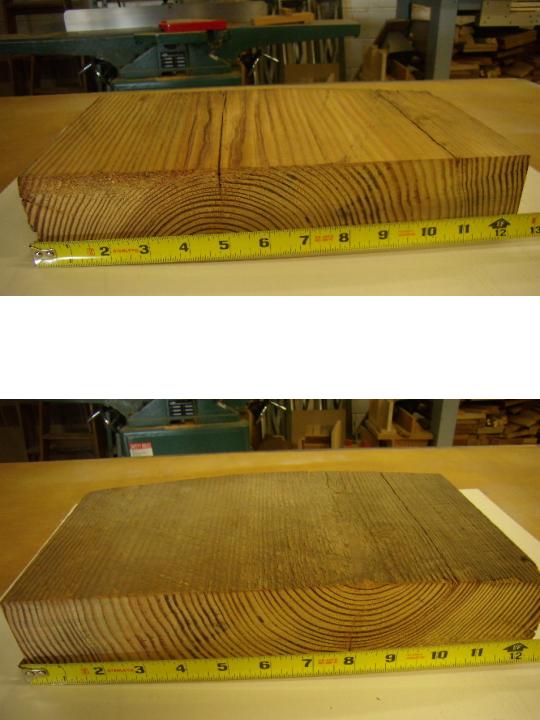Question
I read that #2 common was considered the standard for furniture and cabinetry. I'm sure it all varies wildly as to what each shop can use for the markets they serve, but it got me to wondering what grade most of you bring in for your bread and butter work? FAS? 1COM? We tend to default to the higher grades to minimize how much sorting and grading we have to do in house, but I'm wondering what others are doing.
Forum Responses
(Cabinetmaking Forum)
From contributor J:
Years ago, and I mean a lot of years ago, I went to IWF for the first time and saw an optimizing machine. They stick one by #2 common on one end and a red eye would read the board and tell the saw what optimum cut they could get between knots. They claim they could get a 95% yield out of #2 common. This piece of equipment is meant for the large cabinet manufacturer who builds standardized cabinets. Being a 2-man cabinet shop, I use FAS and have to say I only get 95%. That's one of the many ways the standardized cabinet companies can beat up on us little guys.
The grades consider wane, sapwood and end checks, splits and knots, but larger cuttings are available from better grades and smaller cuttings are yielded from lesser grades. Many grades use the best face, and the species will affect the yield also.
If you are building room size wall panels, only the best grades will work, and there may be a lot of waste. If you make toys and small parts are all you need, then #2 or even #3 will be sufficient. Realize that there will be lot of waste - 50% or more - with lesser grades, but your costs will also be dramatically lower. However, it does take labor - and some knowledge - to make the best of those grades. Hence the optimizing systems.
For what it is worth, I can buy a semi-load of FAS 8/4 walnut and not have 2 clear 9' x 6" boards, all heart both sides, with which to make passage door stiles. 100% waste is possible.
Some species that are copyrighted or exclusively harvested by one company may have proprietary grades that do not equal NHLA or similar grading systems. Alder is graded out into 18 grades when I last looked at it.
The typical grade for cabinets is No. 2 Common, as that industry needs mostly shorter (19") pieces and a few longer ones. Here are two tables to help understand the grades, but these yield numbers have to consider the price of lumber as well… A lower yield is tolerable if the yield drop is fairly small, but the price drop when using a lower grade is fairly large. (Note that today, No. 2 Common and No. 1 Common prices are closer than has been typical.)
Overall yield when using 15" and longer pieces:
FAS--76%
No. 1 Common--71%
No. 2 Common--59%
As mentioned previously, the cuttings in the lower grades will be shorter, so if you need long cuts, use more upper grade.
Yield of 3" x 40" pieces
FAS--56%
No. 1 Common--42%
No. 2 Common--29%
Note: Hardwood lumber is graded from the worse face. The worst face of no. 1 Common is No. 1 Common. The worst face of Selects and FAS-1 Face is also No. 1 Common. Hence, the yield from Select and FAS-1 Face lumber is essentially the same if cutting C2F pieces, as the worst side is the same. The best side with Select and FAS-1Face is better than for No. 1 Common, but that is of little advantage with C2F.
Why are the yield numbers above seemingly high? Because we used lumber grades and BF measurements from after drying. Often, we base yields on footage and grade determined prior to drying. We also did not have end splits because the lumber was fairly well end coated.
From Professor Gene Wengert, Sawing and Drying Forum technical advisor:
I believe the report was for kitchen cabinets, but it may indeed have been flawed. I will look for it.
Of course looking at the #1 common packs off the grading line I think "hmm…" but I've been bitten by that bug before, only to break into the pack and wish I'd gone with FAS. This job is all red oak and split between cabinetry and trim. Even their 1 common was really nice (hence the hmmm) and the FAS was nearly all dead clear (that I could see). No different than any I'm sure, I just got to thinking if I could capitalize on the cost savings for at least the cabs. Still haven't made my final decision.
